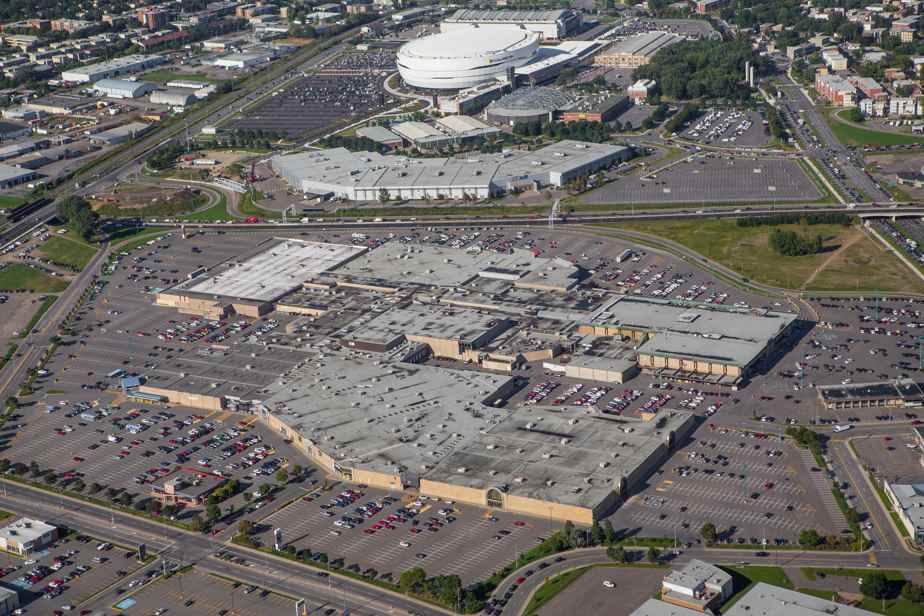The Quebec government is investing $43 million in the transformation of Place Fleur de Lys into a $750 million multifunctional complex with residential, office and public service components. An unusual intervention that raises reactions.
Posted at 5:00 a.m.
According to the decree published on July 27 and adopted on July 6, the money comes from the government’s discretionary envelope, called the Economic Development Fund, which is used to finance businesses. Investissement Québec (IQ) acts as agent.
“The intervention is justified by its differentiation compared to other real estate projects. This major project will help revitalize a central district of Quebec City, attract new clienteles and offer a range of services to the surrounding population,” explained the Ministry of the Economy.
“It’s a business partnership with an expectation of return,” we continue. If other promoters submit similar projects, they will be analyzed taking into account the same criteria and with the same rigor as that concerning Place Fleur de Lys, ”assures the government.
No social housing
Without success, The Press asked the government and the owners of Place Fleur de Lys for the number of social housing units planned. A daily article The sun dated September 2021 reported that there would be 0 out of the first 1000 dwellings.
The government investment takes the form of the purchase of preferred shares for a maximum of $43 million in the company 9468-4859 Québec, whose directors are linked to Trudel Alliance, owner of Place Fleur de Lys. The performance required is kept confidential.
The limited partnership Trudel Alliance is in the process of transforming the old center occupying a plot of land with an area of 280,000 m2 (3 million square feet) into a mixed-use complex. Works worth 750 million spread over five to seven years are on the program.
More than 2,500 housing units, a university campus, trees, community services, offices and commercial spaces replace the dilapidated shopping mall of approximately 80,000 m2 (860,000 sq.ft.2).
The Trudel Alliance limited partnership is owned by brothers William and Jonathan Trudel and their partners. Among the sponsors, there is a company linked to the manufacturer Pomerleau.

PHOTO PATRICE LAROCHE, LE SOLEIL ARCHIVES
Brothers William and Jonathan Trudel, owners of Trudel Alliance, in June 2021
“This government investment is being made through a preferred equity investment. These will eventually be bought by Trudel. This investment enhances the innovative aspect of Fleur de Lys,” said Trudel in a second email sent to The Press. In another email sent earlier, the company wrote that the project “would have been carried out with or without government assistance”.
The new UQTR campus in Quebec, which is not far from Place Fleur de Lys, welcomed its first students last fall. There is also talk of opening a university for the third age there. The transformation project was the subject of a stakeholder consultation.
A previous
“If the funds are used for the redevelopment of the center, the equivalent must be made available to all promoters,” says Vincent Chiara, president of Groupe Mach, owner of several shopping centers in the Quebec region.
There are 50 shopping centers over 500,000 sq.ft.2 of leasable area in Quebec. “Virtually all of them have transformation projects,” points out commercial real estate specialist Jean-François Grenier, Senior Director of Altus Analytical Solutions.
In the past, the provincial government has intervened in the private real estate market by subsidizing building tenants. This was particularly the case at the Cité multimedia and the Cité du commerce e-commerce at the turn of the century. Competitors had cried unfair competition. This time, the intervention is in the capital of a subsidiary of the promoter.
“A justified intervention”
“Such assistance is certainly not common, agrees François Des Rosiers, professor at Laval University. It is undoubtedly part of a major urban redevelopment perspective in the area surrounding the Videotron Centre. It is therefore not a question of “renovating” the shopping centre, but of radically changing its vocation”, he specifies.
For Danielle Pilette, professor in the Department of Strategy, Social and Environmental Responsibility at UQAM’s School of Management Sciences, government intervention is justified, since the assisted project aims to requalify a sector of Vanier, a central district of the city of Quebec in need of love.
The presence of the UQTR campus and that to come of the university of the third age contribute to the democratization of knowledge.
Danielle Pilette, professor at the School of Management Sciences at UQAM
There is a lot of work to be done to requalify the city of Quebec based on knowledge. This kind of government intervention is part of this approach. By investing in the form of preferred shares, she adds, the government gives itself guarantees.
The key words are “urban revitalization,” says Christian Yaccarini, president of Société de développement Angus (SDA), a promoter putting forward projects with social economy components. “In principle, I find it interesting that the government is involved in supporting urban revitalization projects in a context of housing crisis, with rising costs and land prices,” he says.
Moreover, at the beginning of the development of the Angus lands, in Rosemont, in the 1990s, SDA had received 32 million in government loans which proved essential to the take-off of the adventure and to its success, insists. -he. The loans have since been repaid.

